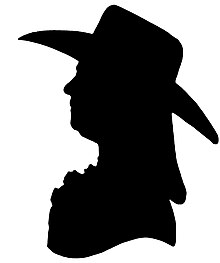White Watson
| White Watson | |
|---|---|

self-silhouette
|
|
| Born | 10 April 1760 Sheffield |
| Died | 8 August 1835 (aged 75) Bakewell |
| Nationality | British |
| Parent(s) | Samuel and Martha White |
White Watson (10 April 1760 – 8 August 1835) was an early English geologist, sculptor, stonemason and carver, marble-worker and mineral dealer. In common with many learned people of his time, he was skilled in a number of artistic and scientific areas, becoming a writer, poet, journalist, teacher, botanist and gardener as well as a geologist and mineralogist. He kept extensive diaries and sketchbooks of his observations on geology, fossils and minerals, flora and fauna, and published a small but significant and influential number of geological papers and catalogues. As an artist he was well known locally for his silhouettes, both on paper and as marble inlays.
Watson was born at Whitely Wood Hall, Whiteley Woods, near Sheffield, on 10 April 1760. His father was Samuel Watson, a millstone manufacturer of Baslow, Derbyshire, his mother Martha White (which is from where his unusual first name derives). Watson's great-grandfather, Samuel Watson, and his grandfather, also Samuel Watson, had been sculptors and stonemasons engaged on the re-building of Chatsworth House between 1687 and 1706. Continuing the family tradition, in later years White Watson would also work for the Chatsworth Estate.
Whilst still a child, Watson became interested in minerals and fossils, and began his own collection as well as providing specimens for sale in his uncle's shop. His uncle, Henry Watson, had been a marble sculptor in Bakewell and Ashford-in-the-Water since the early 1750s, and he built and owned the water-powered marble mill in Ashford-in-the-Water. Henry Watson was largely responsible for founding the trade in the local Blue John fluorite and Ashford Black Marble, and provided the magnificent black and white marble flooring for the Great Hall at Chatsworth House in 1779. On leaving Sheffield School at the age of 14, White Watson went to live with his uncle, and was apprenticed to him on 31 May 1774. According to his own catalogue, now preserved in Sheffield Library, he formally began his collection of fossils and marbles the same year. By 1782 he was advertising his trade as a sculptor and engraver, and helping his uncle to run the business.
Possibly inspired by geologist John Whitehurst's 1782 diagrams of stratigraphic sections in the Matlock area of Derbyshire, in 1785 Watson presented Whitehurst with a diagrammatic 'Tablet', 'A Section of a Mountain in Derbyshire', made from samples of the rocks themselves. This innovative method of display not only showed an early understanding of the new science of geological strata but also formed the first attempt at documenting the stratigraphical structure of Derbyshire as a whole as opposed to the structure of specific localities as Whitehurst had. Over the course of his life, Watson would produce about 100 such tablets, accompanied with explanatory leaflets, and his papers contain sketches for considerably more. Unfortunately most of these tablets are now untraceable, although around fifteen are known to still survive.
...
Wikipedia
